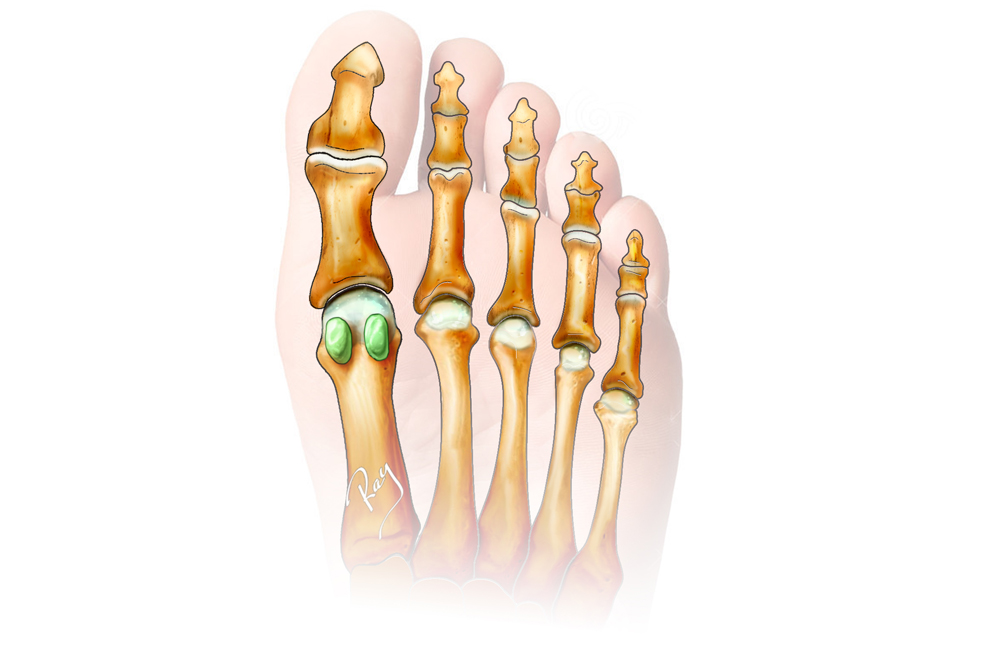What is it?
Anatomically, a sesamoid bone is a bone located in a muscle or tendon. Its etymology comes from the Latin “sesamum”, which means sesame, given their resemblance to a sesame seed.
They are located in several areas of the human body such as the patella (kneecap) or the thumb in the hand.
In the foot, this type of injury is encountered in many forms, but generally speaking it refers to the two small bones beneath the first metatarsal head, which are defined as “sesamoid”.

